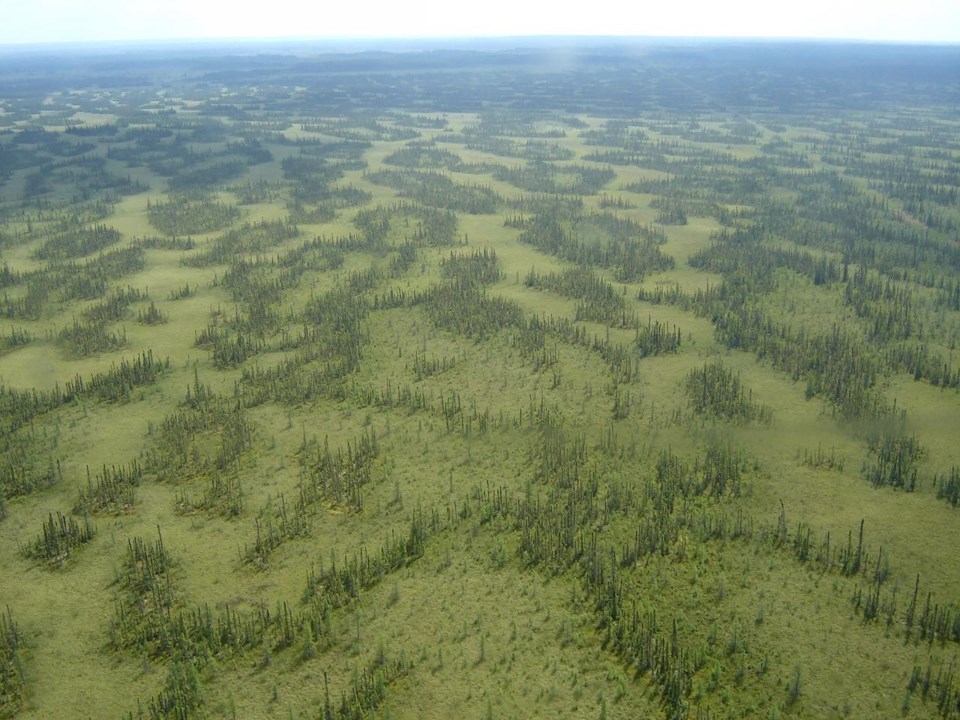EDMONTON — Alberta's energy regulator is reconsidering a project it approved months ago after receiving a critical report on Fort Hills Energy's plan to mine oilsands from a unique carbon-storing wetland.Â
In September, the Alberta Energy Regulator approved plans to mine a portion of the McClelland Lake Wetland Complex — a large and intact wetland once considered for environmental protection that lies partly within the company's lease.Â
The approval came after a two-decade regulatory history and the submission by Fort Hills of plans saying it could mine about half the wetland without affecting the remainder.
But in March, the Alberta Wilderness Association presented the regulator with an independent scientific analysis of the company's plan that found significant shortfalls. It asked the regulator to revisit its decision.
"We note that you have requested a reconsideration," said the regulator's April 12 response. "This request will be processed through (our) reconsideration process."
Legislation says the regulator may confirm, vary, suspend or revoke its decisions, with or without a hearing.
The McClelland Lake complex, about 90 kilometres north of Fort McMurray, comprises two large patterned fens — peat-producing wetlands featuring long strings of trees and shrubs separated by narrow pools. Its 60 square kilometres host 12 sinkhole lakes, a rare landform created by the collapse of lower rock layers.
Twenty rare or endangered plant species and communities live there. More than 200 migratory bird species, including endangered whooping cranes, use it as a stopover.
It contains 11,000 years worth of accumulated carbon-rich peat. First Nations have used it for centuries.Â
The association wants the entire area protected, noting it represents a tiny fraction of Alberta's 4,750 square kilometres of mineable oilsands. Â
The complex was excluded from development in 1996. That exclusion was lifted in 2002 for the part of the wetland within an oilsands lease then owned by True North Energy.Â
At that time, the regulator estimated the wetland overlay a billion barrels of bitumen.Â
The regulator approved True North's application to develop the site, despite warnings from an environmental impact assessment that mine dewatering and other disturbances would likely kill the fen's distinctive peat-forming mosses. The approval came with conditions that included developing a plan to protect the unmined portion of the wetland.
That plan, finally submitted in 2021, is what is now being reconsidered, although the project now belongs to Fort Hills Energy, majority-owned by Suncor Energy Inc.Â
The plan proposes a complicated set of wells and pumps to control and monitor water levels and chemistry. But its centrepiece is a wall, nearly 14 kilometres long and between 20 and 70 metres deep, which is intended to protect the unmined wetland while the rest is drained and excavated.Â
"It is untested," said Lorna Harris, an ecologist specializing in peat with the Wildlife Conservation Society, who has worked at universities in Canada and England. "We do not have any certainty that it will work."
That wall will have to work for decades, she said.
"We know that these structures do leak.
"We've just seen (that) recently with (Imperial Oil's) Kearl Lake (oilsands) tailings leak. It's known from other sites as well."
The company acknowledges plans for the wall are incomplete. "The water management design features are currently at a conceptual stage and engineering work to advance the features is ongoing," the plan says.
Harris, who wrote the report with Kelly Biagi of Brock University, said the plan from Fort Hills also threatens the wetland's delicate water chemistry. Â
"The species in that fen on which the entire ecosystem depends, they depend on that chemistry. As soon as you change that, you will likely lose those species."
Attempts by other oilsands producers to rebuild fens have evolved into different types of wetlands, Harris said, and it's not clear if those fens will produce peat and store carbon over the long term.
McClelland Lake does. The site is underlain by peat between two and eight metres deep.
"That is deep peat," Harris said. "That is a lot of carbon."
She said she has calculated that the entire McClelland complex stores the equivalent of between eight million and 35 million tonnes of carbon dioxide. The entire amount of carbon dioxide sequestered in Alberta's carbon capture and storage programs since 2015 is 10.5 million tonnes. Â
Harris and Biagi also question the plan by Fort Hills to maintain water levels, adding that much of its modelling is based on a few years worth of data — not good enough as climate change alters the rules.
In its September approval letter, the regulator listed stringent monitoring conditions. "The (regulator) expects the operation plan to include triggers that are designed to detect significant departures from the expected performance as quickly as practical," it says.Â
In a separate letter, the regulator reminded the Alberta Wilderness Association the plan is the result of years of work.
"Fort Hills is required to conduct further monitoring, modelling, and engineering studies, with performance reports submitted ... for review. Subject matter experts will continue to be involved in the review of the performance of the project."
Suncor said in an email that it's committed to protecting the unmined portion of the wetland.
"The plan was the result of years of work informed by a sustainability committee struck in 2005, including representatives of local Indigenous communities," wrote spokesman Leithan Slade.
"The plan will continue to be refined as additional monitoring and modelling work is completed as well as further engagement with the sustainability committee. Comprehensive reporting to the (regulator) will also continue through the mine life into closure."
Harris warned that by the time monitoring catches changes, it would be too late.
She said in places such as Europe, fens are heavily protected for their uniqueness and carbon-storage ability. Mining even part of the McClelland Lake complex wouldn't be considered there.
"I don't think this would be acceptable elsewhere."
This report by The Canadian Press was first published April 17, 2023.
Bob Weber, The Canadian Press




